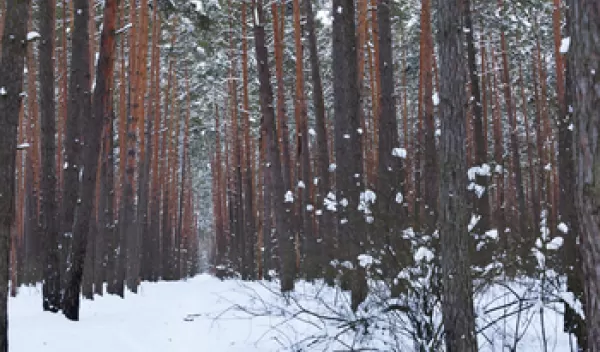
When a tree falls in the forest, what’s the impact on water resources?
Forest management practices such as cutting or thinning trees reduce the risk of wildfires and enhance the overall health of the woodlands. However, they also can speed up the pace of snow melt, which in turn may increase erosion and destabilize streams. Too much melt within a short time interval sends excessive sediment and nutrients into streams, harming ecosystems and degrading water quality, which is expensive to treat.
Mukesh Kumar, assistant professor of hydrology and water resources at Duke University, thinks there needs to be an equilibrium between maintaining the well-being of the forest through sound forest management practices, and preserving seasonal snow in forested uplands that serve as a critical water source for most of the western United States. It is an issue that assumes added importance now, during a time of severe and prolonged drought in the West.
"Generally, in most of the western United States and many snow dominated settings in the world, most of the water supply is recharged from snow melt, and much of this happens in forested areas," he says. "At the same time, many forest management practices are done every few years, trying to maintain a certain density of trees that allows every tree to get sufficient nutrients and sunlight…[and] reduce fire risk."
As a result, more sun hits the snow on the ground, and it melts faster, causing an increase in so-called "spring stream flow peak," which means "the largest flow in the stream or river during the melt season," he explains, adding: "This can be a problem. What we are trying to do is strike a balance between maximizing forest productivity and minimizing its impact on water resources."
The National Science Foundation (NSF)-funded scientist is working at several sites, including the Mica Creek Experimental Watershed in Idaho, the Southern Sierra Critical Zone Observatory in California and the Niwot Ridge Long Term Ecological Research site in Colorado, taking measurements of direct radiation (sunlight), diffuse radiation (skylight) and longwave radiation (heat emitted by the trees) as it reaches the forest floor at various vegetation densities in the forest. He also will assess snow losses, and how the reflectivity of the snow changes with vegetation density, "because all of these will determine the rate at which snow will evaporate or accumulate, and melt will happen," he says.
His project aims to better understand the impact of such practices as thinning and gap creation--an opening in the forest--on snow accumulation, snow melt and the hydrologic response that follows.
He and his collaborators, who include Timothy Link, professor of hydrology at the University of Idaho, also are developing fine-scale forest radiation computer models and integrated hydrologic models, which they plan to use to identify optimal tree patterns that will minimize the negative impact on water resources. They will feed their field measurements into their computer models "to ensure the models we built are valid," he says, then put different scenarios into the computer "to evaluate the impacts on stream flow."
Ultimately, the computer model should tell the scientists location-specific forest management practices with minimum negative effects on the water. "Hopefully, the computer model will tell us how to do this--should we thin on the north facing slope? Or south facing? How much should we thin?," he says. "If the goal is to reduce the impact on water resources, what specific configuration will take us there?"
Moreover, another aspect of the same project seeks "to be able to do forest management that will increase the total amount of water yield from the forest," he adds, especially critical during the current ongoing drought.
"Let's say we have a dense forest, the snow gets intercepted and lost into the atmosphere through evaporation," he explains. "If we can identify optimal tree densities or gap patterns that can increase the snow retention in the forest, it will increase the amount of water in the stream. We are reducing the losses, letting the snow hit the ground. The optimal forest patterns will allow melt at such a rate that it is available during the time we need water, which is in the summer."
Kumar is conducting his research under an NSF Faculty Early Career Development (CAREER) award, which he received earlier this year. The award supports junior faculty who exemplify the role of teacher-scholars through outstanding research, excellent education, and the integration of education and research within the context of the mission of their organization. NSF is funding his work with $570,000 over five years.
As part of the grant’s educational component, he is incorporating the results of his research into the two courses on hydrologic modeling that he teaches, and he also is developing K-12 outreach programs designed to teach young people about specific water topics and the trade-offs involved in decision-making and science-based solutions.
Among other things, he is working with the Morehead Planetarium Science Center at the annual North Carolina Science Festival to bring middle-school and high-school students into his lab, and is designing a web interface that will provide prototype model simulations of different water and forest settings so that "students will be able to evaluate how certain degrees of deforestation may impact the flood or drought, or availability of water in the summer," he says.
